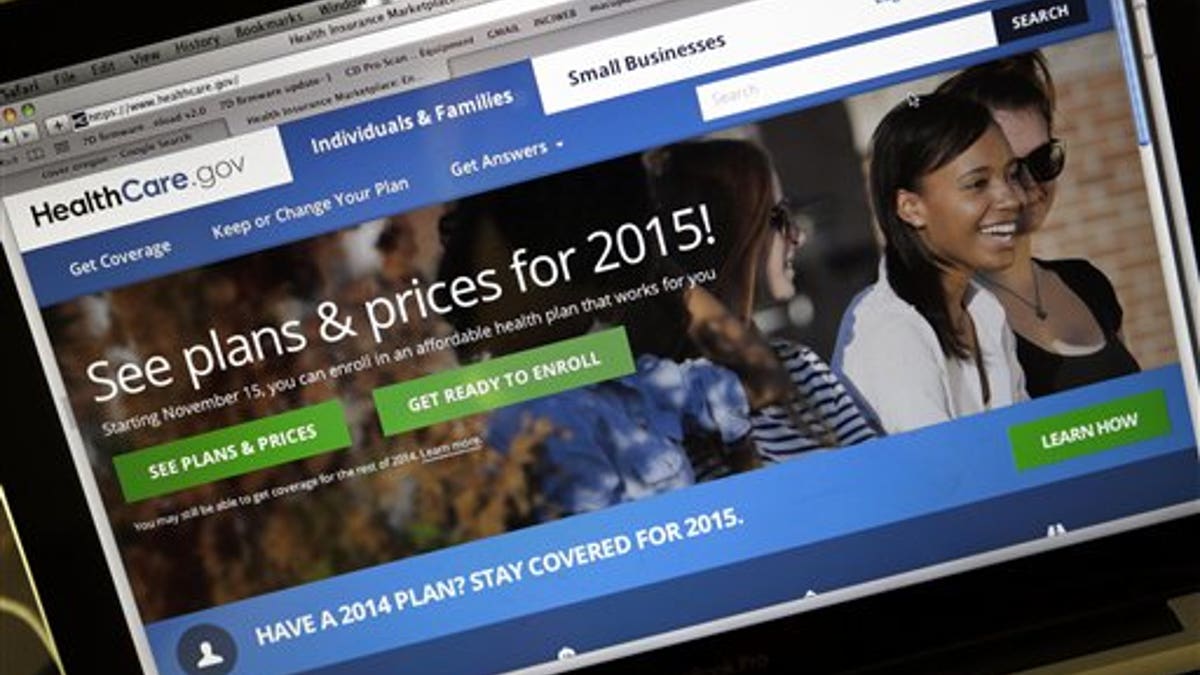
FILE - In this Nov. 12, 2014 file photo, the HealthCare.gov website, where people can buy health insurance, is seen on a laptop screen in Portland, Ore. (AP Photo/Don Ryan, File)
Whenever I write about ObamaCare's expansion of health insurance, most of the emails I get from readers include some version of: Sure, the premiums may be low, but who can afford to see a doctor?
It's not surprising that out-of-pocket payments, also called cost-sharing charges, are higher for lower-cost plans
A survey released [last week] by the Kaiser Family Foundation, tracking 2015 deductibles and copayments across most exchange plans, says those complaints are at least half right. For all but the most generous ObamaCare plans, out-of-pocket payments are usually higher than for employer-based insurance -- in some cases, drastically so.
It's not surprising that out-of-pocket payments, also called cost-sharing charges, are higher for lower-cost plans
Some background: The metal levels in the charts below refer to how consumers are charged. For a bronze plan, the insurer is meant to cover 60 percent of the cost of essential health care, on average, leaving beneficiaries to cover the rest. For silver plans, it's 70 percent; for gold, 80 percent; and for platinum plans, 90 percent. As a result, premiums are generally lowest for bronze plans and highest for platinum.
So it's not surprising that out-of-pocket payments, also called cost-sharing charges, are higher for lower-cost plans. It is surprising just how high those payments are, even for middle-tier exchange plans, and also how high they are compared with the average plans that workers get through their companies.
Start with annual deductibles. For bronze plans in 2015, they're enormous -- $5,372, or about five times what the average person with employer-based individual coverage faced last year. More important, and potentially worrisome for the law's defenders: Average deductibles for silver plans (the most popular type of exchange coverage) are about three times as high as on employer plans. Even gold plans have slightly higher average deductibles.
Click to read Christopher Flavelle’s full column at BloombergView.
